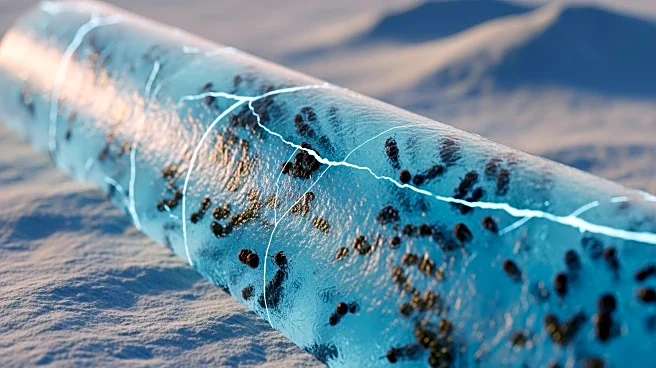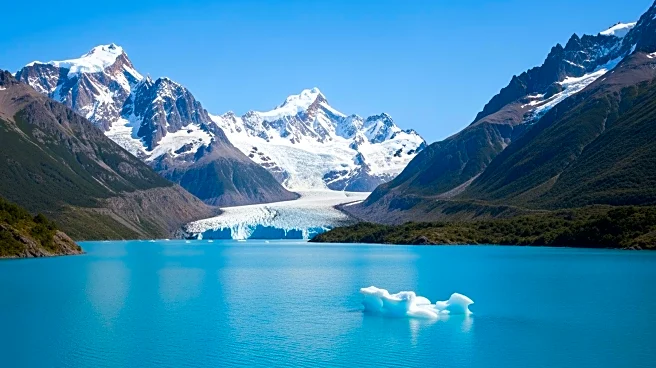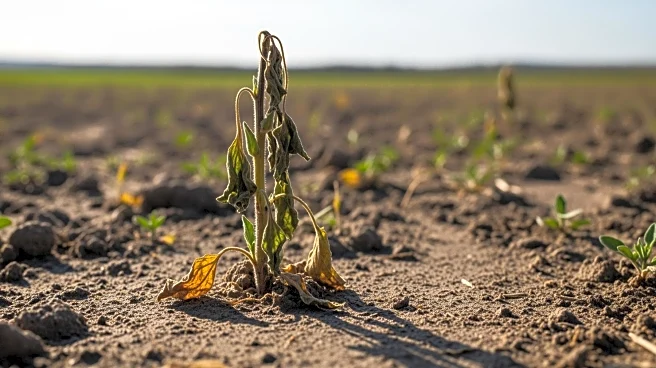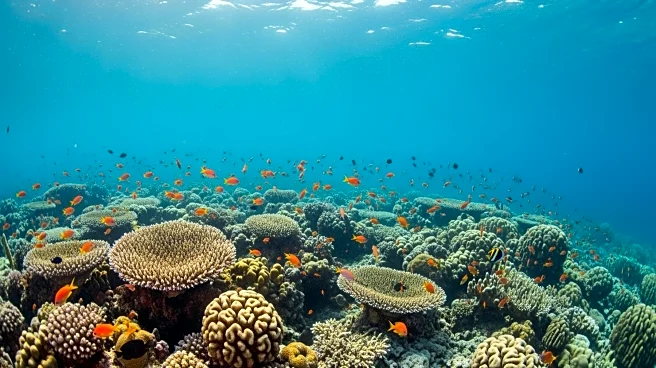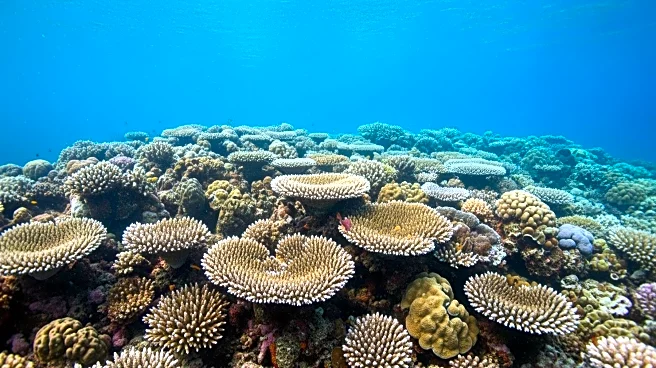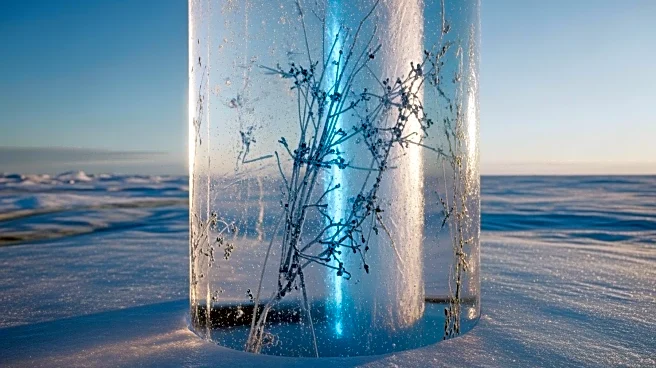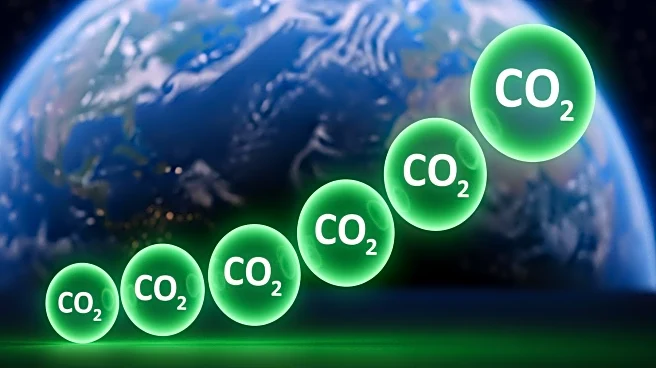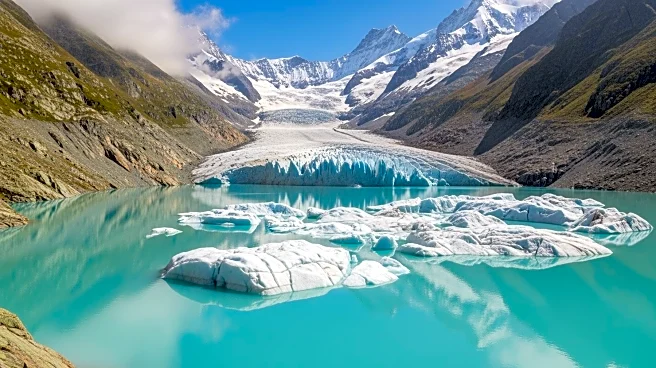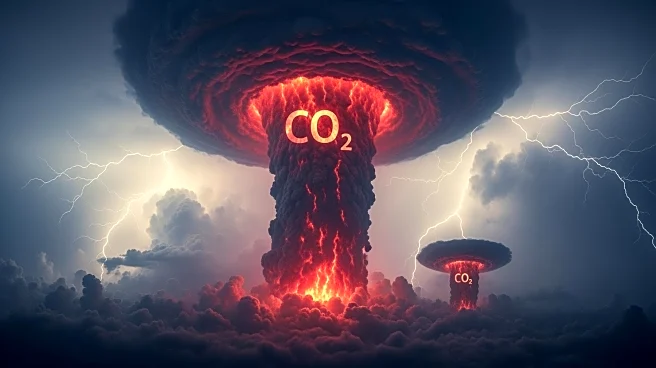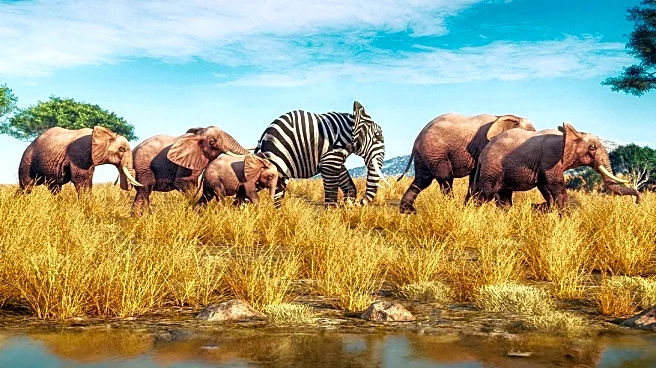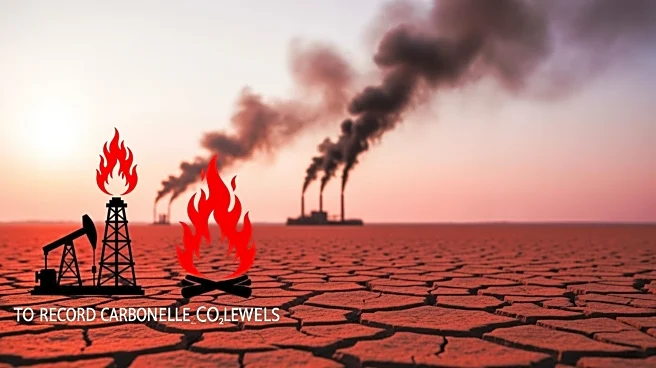What's Happening?
Recent scientific findings have revealed that microbes revived from the Alaskan permafrost are releasing carbon dioxide, contributing to climate change. These microbes, dormant for up to 40,000 years,
have resumed activity due to thawing permafrost, a result of global warming. This development is part of a broader trend of increasing greenhouse gas emissions, exacerbated by human activities and natural phenomena like wildfires. The study highlights the potential for a 'climate doom loop,' where warming leads to more emissions, further accelerating climate change.
Why It's Important?
The release of greenhouse gases from thawing permafrost represents a significant feedback loop in climate change, potentially leading to more severe weather events and environmental shifts. This could have profound impacts on global ecosystems, agriculture, and human societies, particularly in regions already vulnerable to climate change. Understanding these processes is crucial for developing effective climate policies and mitigation strategies.
Beyond the Headlines
The findings underscore the importance of addressing climate change through both mitigation and adaptation strategies. The potential for increased emissions from natural sources like permafrost adds urgency to global efforts to reduce human-induced emissions and transition to sustainable energy sources.
